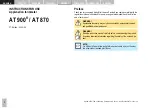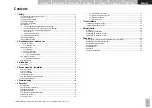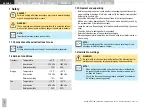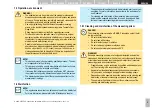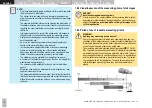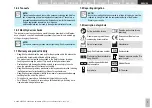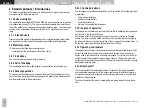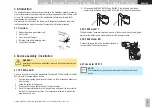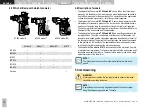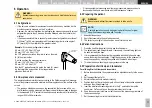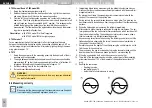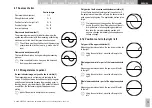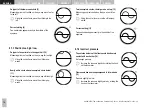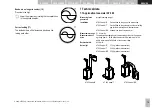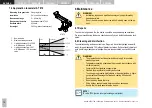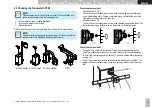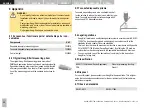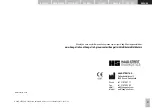
11
DEUTSCH
ENGLISH
FRANÇAIS
ITALIANO
ESPAÑOL
NEDERLANDS
PORTUGUÊS
SVENSKA
DEUTSCH
ENGLISH
FRANÇAIS
ITALIANO
ESPAÑOL
NEDERLANDS
PORTUGUÊS
SVENSKA
© HAAG‑STREIT AG, 3098 Koeniz, Switzerland ‑ HS‑Doc. no. 1500.7006000‑04270 – 2022 – 09
6 Operation
WARNING!
Reusable measuring prisms must be cleaned and disinfected after every
examination.
6.1 Astigmatism
• If the cornea is spherical, measurements can be taken on any meridian, but it is
most convenient to measure on the 0° meridian.
• However, the choice of meridian is significant when measuring eyes with corneal
astigmatism greater than 3 dioptres, since the flattened area is not circular, but
elliptical.
• It has been calculated that, in cases of greater corneal astigmatism, a surface of
7.354 mm
2
(ø 3.06 mm) is applanated if the measuring prism is at an angle of
43° (mark (A)) to the meridian of the greatest radius.
Example:
If the corneal astigmatism measures
6.5 mm / 30° = 52.0 dpt / 30° and
8.5 mm / 120° = 40.0 dpt / 120°
the 120° graduation mark on the prism is set on the mark
(A) of the prism holder.
If, on the contrary, the measurements are
6.5 mm / 120° = 40.0 dpt / 120° and
8.5 mm / 30° = 52.0 dpt / 30°
then the 30° graduation mark is set on the mark (A), mean-
ing that simply the axis position of the largest radius is
placed on the mark (A).
6.2 How pressure is measured
The applanation tonometer functions according to the 'Goldmann method': measure-
ment of the pressure required to maintain a uniform applanation of the surface of the
cornea.
• The readings obtained are based on the assumption that a cornea with a 'nor-
mal' thickness is being measured; a different corneal thickness leads to changes
in the measured IOP. A 'normal' corneal thickness is considered to fall within the
range of 530 to 560 micrometre.
• If it is suspected that measuring results may be inaccurate, please conduct a
functional verification in accordance with the 'Maintenance' chapter.
6.3 Preparing the patient
WARNING!
Measurements without fluorescein can lead to false results.
NOTE!
A smooth operation can only be guaranteed with the use of original
Haag-Streit measuring prisms and Tonosafe.
1. Anaesthetise each eye
2. Apply Fluorescein into the eye to be examined
3. The correct eye height of the patient can be set via the chin rest.
6.4 Patient instructions
1. Press the head firmly against the chin and forehead rests.
2. The patient must look straight forward. If necessary, the small fixing light can
be used to steady the eyes.
3. It is recommended that the patient be repeatedly reminded to keep his eyes
open wide during the examination. It might be necessary for the examiner to
keep the eye open by splaying the eyelids with thumb and index finger.
4. This must be done without applying any pressure to the eye.
6.5 Preparation of slit lamp and tonometer
For all Haag-Streit slit lamps and tonometers
1. Before the examination, the eyepieces must be adjusted correctly to the exam-
iner.
2. Set the magnification to 10×.
3. Adjust the illumination to medium intensity.
4. Position the blue filter in the beam path of the slit lamp's illumination apparatus
and open the slit diaphragm fully.
5. Insert the disinfected measuring prism into the (0° position) holder on the
sensor arm. For Tonosafe, see the separate instructions for use.
6. Snap the sensor arm into place so that the axes of the measuring prism and of
the microscope align.
7. Set the measuring drum to the first calibration line.


